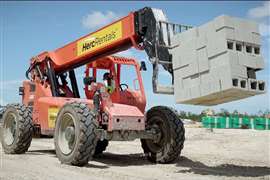Going nuclear
08 May 2008
Around the world nations increasingly look to new nuclear power plants to help meet the growing demand for electricity with a reliable source of clean, carbon-free energy. Due to nuclear power producing no pollutants or greenhouse gases that contribute to global warming, it has gained the support of such environmental leaders as Greenpeace co-founder Patrick Moore.
Nuclear energy also has gained favour because it is reliable and affordable. Indeed, nuclear power is the lowest cost producer of baseload electricity.
Average nuclear power costs have declined more than 30% in the last 10 years, to an average of 1.72 cents per kilowatt-hour. This includes costs of operating and maintaining plant, purchasing nuclear fuel, and paying for managing used fuel.
Already about 435 commercial nuclear power reactors supply 16% of the world's electricity. Sixteen countries depend on nuclear power for at least a quarter of their electricity. France obtains more than three quarters of its power from nuclear energy.
More than 30 nuclear reactors are under construction in 11 countries, notably China, South Korea, Japan and Russia. The World Nuclear Association estimates that countries have planned construction of 93 commercial power reactors and proposed 222 more.
Increased nuclear capacity in numerous power reactors in the US, Belgium, Sweden and Germany is resulting from the upgrading of existing plants. This is a highly cost-effective way of bringing on new capacity.
Most nuclear power plants originally had a nominal design life of up to 40 years, but engineering assessments of plants over the last decade have established that many can operate longer. In the United States, nearly 50 reactors have been granted licence renewal that extends their operating lives to 60 years. The technical and economic feasibility of replacing major components such as steam generators has been clearly demonstrated.
Building a new nuclear plant results in the creation of 1,400 to 1,800 jobs during construction, on average. A substantial number of these jobs involve specialized carriers and rigging companies, contracted to haul and install reactor pressure vessels, steam and turbine generators, large-bore seamless piping and other nuclear components. Our industry also benefits from efforts to increase capacity or extend the life of existing plants.
Why are not more nuclear plants being planned? Political considerations always have been the major impediment to nuclear power. Nuclear technology was first developed in the 1940s for the purpose of producing bombs.
When attention turned to the peaceful purposes of nuclear fission in the 1950s, notably for power generation, many people remained sceptical. Incidents in the last 30 years also hindered the nuclear power industry's reputation.
An incident caused by equipment failure and human error at the Three Mile Island 2 nuclear power plant near Harrisburg, Pennsylvania, US, in 1979 resulted in the release of radioactive material, but no one was injured or killed. In 1986 a severely flawed reactor design combined with human error at the Chernobyl nuclear power plant in Ukraine resulted in the only accident in the history of commercial nuclear power to cause fatalities from radiation.
Since then the nuclear power industry has made major efforts to improve safety. Modern nuclear power plant design and construction ensure that plants can withstand powerful earthquakes and floods. Countries with nuclear plants also need to ensure the power plants are their most secure industrial facilities. In the US the industry incorporates physical security measures, plant surveillance and access systems and cyber security. It also coordinates with law enforcement and intelligence authorities to keep nuclear plants safe and secure.
These considerations complicate the efforts of companies involved with the construction and renovation of nuclear power plants around the world. Our members have always taken on the toughest tasks, and they are prepared to take on this challenge.






